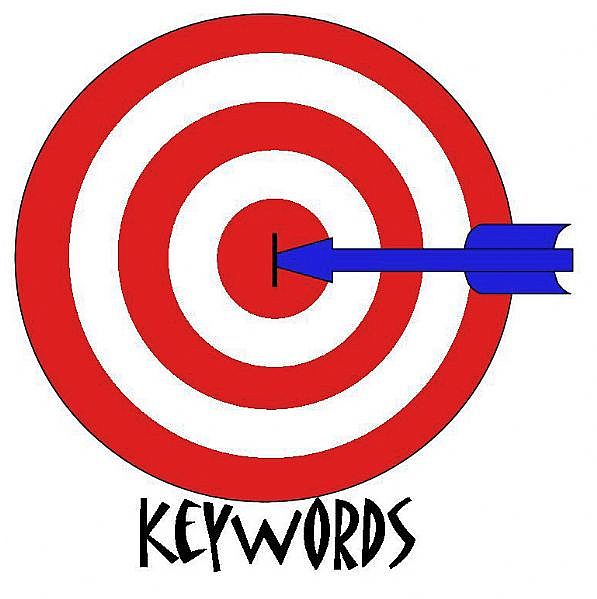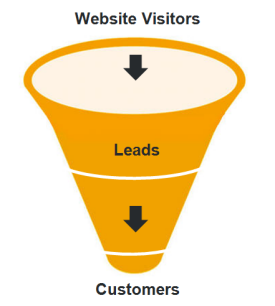by blogmistress on February 8, 2012
 SEO (search engine optimization) is the next step in our internet marketing strategy. If you are following along as we go through the steps included in the Essential Guide to Internet Marketing, you will remember that the first step was researching keywords. Now that you have identified some good keywords, what should you do with them?
SEO (search engine optimization) is the next step in our internet marketing strategy. If you are following along as we go through the steps included in the Essential Guide to Internet Marketing, you will remember that the first step was researching keywords. Now that you have identified some good keywords, what should you do with them?
Keywords can help your site get found by search engines and that is what SEO is all about. SEO can be broken down into two categories:
On-page SEO – This refers to the way your content is presented to search engines and how your keywords are used on your site. This is something that you can improve immediately.
Off-page SEO – This refers to the authority your site has on the web. This can take some time to improve.
Even though on-page SEO accounts for less in how search engines rank your site. It is a good idea to correct this first because it can be improved quickly and keyword placement is an essential part of on-page SEO.
Where should you place your keywords for good on-page SEO?
- Page Title – Page titles are the text you see at the top of your browser when you are on a web page. A page title can be edited in your site’s HTML. Be sure to include the keywords for your page in the page title. Your page title should be less than 70 characters and your keywords should be at the first of the title. Each page on your site gives you an opportunity to target different keywords that are relevant to your business and to your site’s visitors.
- Meta Description – While your page’s meta description does not directly influence your search engine rankings, it is still a good opportunity to include your keywords to help you attract visitors to your site. Your meta description is a summary of what your page is about. It is not seen on your page, but is shown by search engines when your site is included in search results.
- Headings – The text that is included in your headings (those that are surrounded by <Hx> tags in the html code) are seen by search engines as being important. Be sure to include your keywords in your headings.
- Images – Images can certainly enhance your visitors’ experience on your website. Images also give you an opportunity to use your keywords. You can use your keywords in your image file names as well as the images’ alt text. Don’t use images excessively because it can slow down the amount of time it takes your page to load which can negatively impact your search results.
As important as keywords are, it is also important that you don’t “keyword stuff.” That is, don’t just fill a page with your keywords. Not only will keyword stuffing make for a bad experience for your visitors, search engines can detect keyword stuffing and it can adversely affect your rankings. Trying to “trick” search engines is not a good SEO strategy.
To get more in-depth information about how to use your keywords effectively for SEO, (both on-page and off-page), download the Essential Guide to Internet Marketing. This guide will give you the essential steps you need to set up and implement a successful internet marketing strategy.

by Admin on February 7, 2012
Why Build a Keyword Strategy?
Today, most people looking to buy a product or service begin the process by using a search engine to find vendors and product information. How do they do this? By using keywords and keyword phrases. You need to make sure that your website is ranking high in the search engines for the keywords that people are using to find companies like yours.
Some things to remember:
- You have to be on the first or second page of search results or it’s almost like not being there at all.
- Shorter search phrases are searched for more often and usually more difficult to rank for than longer phrases. For example, more searches occur for “shoes” than for “tennis shoes” and both of those are searched more frequently than “red tennis shoes”. However, if you are selling red tennis shoes, you would probably get better qualified visits (leads) by ranking for “red tennis shoes” as opposed to either “tennis shoes” or “shoes”.
How to Create a Keyword Strategy
1. Create a list of 3-5 keywords relevant to your business.
Think like someone searching for your product.
2. Choose keywords based on difficulty and relevance.
Some very general words such as “marketing” or “business” are very competitive, making it difficult to rank well for them. If you are a small- or medium-sized business, you probably want to choose less competitive keywords, more specifically related to your business (these are commonly referred to as long tail keywords).
You should find a balance between relevance and difficulty. Choose about 5 keywords that match your business well.
Note that these keywords do not have to be perfect at first. You can try out different ones to see which work best for you.
3. Design and optimize your website around your keywords.
Now that you’ve chosen your keywords, you should incorporate them into your website. We will talk more about this tomorrow.
For more information on Keyword Strategies as well as internet marketing, download our “Essential Step-by-Step Guide to Internet Marketing”.

by blogmistress on January 9, 2012
If you are not using mobile in your marketing efforts, you are really invisible to what could be a major part of your market. We recently moved to New Orleans, Louisiana. The city has been flooded with tourists for the past few weeks for events ranging from New Year’s Eve to tonight’s BCS Championship Game. For a new locals, like us and tourists alike, mobile helps us get around and find new places to visit.
Here are some things that businesses are doing that have gotten my attention:
- Specials for mobile customers. When I see my friends “check in” to places and post about specials I take notice. Not only has the business provided social proof (my friends, acquaintances, etc. are there), they have also provided me with incentive to visit there as well.
- Providing remarkable service and products. When what you provide is so outstanding that people post/tweet/text about it, you are doing it right!
- Being very visible on mobile. If you have a mobile presence, I’m going to see you. If you don’t I won’t. It is as simple as that.
Being mobile friendly is the first step but it is not, by any means, the only step. Getting noticed on mobile requires that you create a great experience for your customers so that they will “share” you with their social network.
This is not only a lesson for people in New Orleans, it is important for you wherever you are. What are your experiences with mobile marketing? Would love to hear about them.
by blogmistress on January 3, 2012
Being an entrepreneur is not for everyone. It requires a certain tolerance for risk taking. It requires a level of confidence in what you can accomplish. It requires tenacity when things get tough – when success takes more hours, more effort, more knowledge. It takes an ability to get things done with NO EXCUSES!
What excuses are holding you back?
- Not enough time – The fact is, people make time for what is important. They do what they want to do. You are not serious if you don’t have time to work on your business, but you find time to watch football games, go fishing, go shopping . . . You get the point. Sometimes, doing what it takes to grow your business is not the most pleasant thing you can be doing, but it is what needs to be done anyway. Are you committed? Just do it!
- Need more knowledge – Many people start their businesses before they are “experts”, but are very successful because they make learning what they need to know a priority. Just because you can bake great cookies doesn’t mean you will be a successful cookie business. You have to learn what you need to know about management, accounting, inventory, etc. Yes, there is a lot to learn, but if you wait until you know everything, you’ll never get started.
- Fear of rejection/failure – No one wants rejection. No one wants to fail. However, when you look at many successful entrepreneurs, they have been rejected many times, they have failed many times. The difference is, they adjust and keep moving forward. They don’t look for someone to blame. They understand that their success doesn’t depend on others. Failure and rejection are often an important part of success.
- Fear of success – People actually do fear success and success does bring it’s own challenges. What about success do you fear? Visualize success and how you will deal with the challenges and keep moving forward!
- Waiting for the right circumstances – If you are waiting for the perfect circumstances to get started, you may never start. You certainly should be aware of risks, but understand that no new business venture is without risks.
What excuse is holding you back. It’s a new year and time for new beginnings. 2012 – No Excuses! What do you think?

by blogmistress on November 7, 2011
 What can New Orleans web design tell us about marketing? Recently, we traveled to New Orleans for both business and pleasure, and found many examples, some good, some bad of website design/internet marketing and how businesses are using (or in some cases not) the internet to connect with their customers.
What can New Orleans web design tell us about marketing? Recently, we traveled to New Orleans for both business and pleasure, and found many examples, some good, some bad of website design/internet marketing and how businesses are using (or in some cases not) the internet to connect with their customers.
First, some background: According to a story by NOLA.com:
- Forbes Magazine recently named New Orleans the best city for information and technology jobs and New Orleans’ number of business start-ups per capita was 30 percent higher than the national average in 2010.
- New Orleans is experiencing more investment in more diverse industries than we ever have in the history of the city.
- The doldrums are there, but successful entrepreneurs are swimming against the current, It just gives a good example of what can be done.
Obviously, New Orleans has had to recover from some major setbacks but the city is thriving. However, in the area of website design for internet marketing, there is still much work to be done. One of the biggest needs we saw for improvement was in mobile marketing and search engine optimization. In what is called the “city that care forgot,” local businesses cannot afford to be forgotten or never found in the first place!
The same principles apply whether you are in New Orleans or anywhere else, in order to succeed online you must:
- Get found – that means that you must be found where people are looking for you. More and more, these days, that means mobile and tablets. This also means social media. If you are not visible where people are looking, you are invisible.
- Convert – once you are found, you need to have a strategy that converts you visitors into leads for your business.
- Analyze – look at your results and see what works and what doesn’t work. What calls to action are the most effective and what brings the most qualified visitors to your site?
I look forward to hearing more good news about the wonderful city of New Orleans and its thriving entrepreneurial business community. What are the opportunities for growth using internet marketing in your city?

by Admin on October 21, 2011
Keywords and keyword phrases are vital to SEO and getting found on the internet because they are what the search engines use to deliver results. When you have a topic to write about on the internet, you need to do a little keyword research. Think of the words or phrases (keywords and keyword phrases) your target audience might use to search for this topic in search engines. Be sure they are terms your target audience would use. We often see businesses use technical terms when their audience is non-technical laypeople.
Once you have come up with several phrases, use a keyword tool, such as the one in HubSpot or Google, to see if any of your phrases are being used in searches. These tools will also give you ideas for other phrases that are being used. Pick the most relevant phrase to your topic that is getting searched. You usually don’t want the phrase with the most searches, as they are usually very general and you are unlikely to rank for them. Once you have chosen your keyword phrase, sprinkle it throughout your article, use it in your title.
The reason keyword phrases are important is because they are what search engines use to deliver results. All other variables being equal, the more closely your keyword phrase matches someone’s search field, the higher your article will rank in the results.

by blogmistress on October 20, 2011
 Is your website a static brochure or is it a lead generating machine? When people think about designing a website, or redesigning a website, they sometimes overlook the most obvious question which is, “Why?” Why do you want a website or a redesign? Often we hear that the reason is to get a “fresher look” or to incorporate new products or services. Sometimes, business owners want a redesign so they can make edits themselves. However, once they are able to make edits and add content, many times, the website still remains static and changes are seldom made.
Is your website a static brochure or is it a lead generating machine? When people think about designing a website, or redesigning a website, they sometimes overlook the most obvious question which is, “Why?” Why do you want a website or a redesign? Often we hear that the reason is to get a “fresher look” or to incorporate new products or services. Sometimes, business owners want a redesign so they can make edits themselves. However, once they are able to make edits and add content, many times, the website still remains static and changes are seldom made.
What is missing here is the development of goals and strategies for your website. It is much easier to work on generating leads for your website when you have a plan in place. A lead generating plan for your website should start with some basics:
- What kind of content can I create on an ongoing basis that will attract visitors (and search engines) to my website?
- How will I research keywords that are necessary to include in my content?
- When people visit my website, what compelling calls to action can I offer that will encourage them to convert from a visitor into a lead?
- What different offers can I create for people who are in different places in the buying cycle?
- Once someone has converted to a lead for my business, how am I going to nurture that lead into a sale?
- How am I going to analyze my strategy in order to see what is effective and where I need to make adjustments?
All of these questions can help you start creating a strategy for turning your website into a lead generating machine.
Need help? Contact us and we can help you get started!

by Admin on October 19, 2011
 Content Is SEO King
Content Is SEO King
We are constantly telling our clients that blogging is one of the best SEO strategies there is. That’s because search engines love content, fresh relevant content. And the best way to provide fresh relevant content is through relevant keyword rich blog posts.
As we are fond of saying on this blog, your website/blog is like a trotline with every page/post being a hook baited with relevant keywords (Google bait). The more pages/posts you have, the more hooks and Google bait you have. And the more likely you are to show up on a search results page.
Now What
So you’ve got your blog articles out there. Now one of them appears on the first page of someone’s search results and they click, go to and read your blog post. Now what?
What do you want them to do now?
- Download a White Paper or eBook
- Fill out a questionnaire
- Read another article
- Contact you for a consultation
- Or something else
Do you have a call to action that is relevant to your post or your business? Without a call to action, many, if not most, people will think nice article and continue searching the web for more information. You need to give them a reason to give you some information about themselves (e.g. name and email address) in return for something such as a white paper related to the blog post. Once you have their name and email information, they become a lead. Now you can use email marketing to nurture these leads and convert them into customers.
Inbound Marketing is a process and not a tactic. This process uses tactics, such as:
- Search Engine Optimization
- Lead Generation (through Calls To Action)
- Email Marketing
- Lead Nurturing
to achieve its goal, which is securing customers for your business. Many businesses stop after using the first tactic (SEO), thinking more visitors equals more customers. While that may be true to some extent, to be truly successful, you need to go through the entire process to achieve maximum results.

by blogmistress on October 17, 2011
 When you look at a page on your website, can you tell within 4 seconds what the purpose of the page is? Can you tell what problems it solves? Last week we discussed 6 things every webpage should have. The very first thing listed was a goal. How can you determine what the goal of your page is?
When you look at a page on your website, can you tell within 4 seconds what the purpose of the page is? Can you tell what problems it solves? Last week we discussed 6 things every webpage should have. The very first thing listed was a goal. How can you determine what the goal of your page is?
- Does the page solve a problem or create a problem? What problem does it solve?
- Does the page address your target market? What kind of information is your target market looking for? Can they find it on your site?
- Is the content on your page current? Is it updated to reflect the current problems of your target market?
- Is your call to action appropriate for your goal? Is it easy to find or are there barriers on the page that keep your target audience from seeing the purpose.
We should always be think in terms of what our target market needs, what their problems are and, of course, how our product or service solves that problem. Remember, when people find your site online, it is because they were looking for you. They were looking for an answer. When we provide answers to what our target market is looking for, our websites are more effective for our customers and our business as well.
What are the goals of your website?

by blogmistress on October 14, 2011
 Every page on your site should have a call to action. Earlier this week, I posted about what every webpage on your site should have, and the call to action was one of the things I mentioned. I also talked about having a menu on every page except landing pages (where your calls to action lead). So, let’s discuss that just a little bit more in detail.
Every page on your site should have a call to action. Earlier this week, I posted about what every webpage on your site should have, and the call to action was one of the things I mentioned. I also talked about having a menu on every page except landing pages (where your calls to action lead). So, let’s discuss that just a little bit more in detail.
A call to action is what you ask your visitors to do when they get to your site. If you want to measure the effectiveness of your call to action, you really need it to be along the lines of a download of some type of information or a request for more information. Something that requires your visitor to give you an email or other information is much more measurable than, for instance, requesting that your visitors call you.
Once your visitor decides to act on your call to action, they should be directed towards a landing page. A landing page is where they will fill out a form in order to get whatever it is you are offering. This page is the only type of page on your website that does not need a menu. In fact, once your visitor is on your landing page, you don’t want to give them any reason to leave without taking action. Studies show that the fewer distractions on the page, (in this case a menu) the better the conversion rate.
So, what should be on the landing page? Your landing page should include clear, easy to understand, information about what your offer is – what they will get when they fill out your form. Putting this information in a bulleted list will make it easy to read. Of course, your landing page should also contain your form. Your form should ask for the right amount of information. Think about your sales funnel. If your offer is a top of the funnel offer, you should ask for less information than you would for a bottom of the funnel offer. Finally, your landing page could also include a picture that will support your offer.
It is important to get your landing pages right. The difference between an effective landing page and an ineffective landing page is the number of conversions (or actions) that are made on that page. Everyone who converts on a landing page is now a lead for your business. Leads are people who have needed what you have offered and have taken the action to get the offer. Test out different landing pages to see what works better and what doesn’t. Place your calls to action in different places on your site and posts to see what difference that might make.
Inbound marketing with calls to action and landing pages works. Give it a try.

 SEO (search engine optimization) is the next step in our internet marketing strategy. If you are following along as we go through the steps included in the Essential Guide to Internet Marketing, you will remember that the first step was researching keywords. Now that you have identified some good keywords, what should you do with them?
SEO (search engine optimization) is the next step in our internet marketing strategy. If you are following along as we go through the steps included in the Essential Guide to Internet Marketing, you will remember that the first step was researching keywords. Now that you have identified some good keywords, what should you do with them?

 What can New Orleans web design tell us about marketing? Recently, we traveled to New Orleans for both business and pleasure, and found many examples, some good, some bad of website design/internet marketing and how businesses are using (or in some cases not) the internet to connect with their customers.
What can New Orleans web design tell us about marketing? Recently, we traveled to New Orleans for both business and pleasure, and found many examples, some good, some bad of website design/internet marketing and how businesses are using (or in some cases not) the internet to connect with their customers.
 Is your website a static brochure or is it a lead generating machine? When people think about designing a website, or redesigning a website, they sometimes overlook the most obvious question which is, “Why?” Why do you want a website or a redesign? Often we hear that the reason is to get a “fresher look” or to incorporate new products or services. Sometimes, business owners want a redesign so they can make edits themselves. However, once they are able to make edits and add content, many times, the website still remains static and changes are seldom made.
Is your website a static brochure or is it a lead generating machine? When people think about designing a website, or redesigning a website, they sometimes overlook the most obvious question which is, “Why?” Why do you want a website or a redesign? Often we hear that the reason is to get a “fresher look” or to incorporate new products or services. Sometimes, business owners want a redesign so they can make edits themselves. However, once they are able to make edits and add content, many times, the website still remains static and changes are seldom made.
 Content Is SEO King
Content Is SEO King When you look at a page on your website, can you tell within 4 seconds what the purpose of the page is? Can you tell what problems it solves? Last week we discussed
When you look at a page on your website, can you tell within 4 seconds what the purpose of the page is? Can you tell what problems it solves? Last week we discussed  Every page on your site should have a call to action. Earlier this week, I posted about
Every page on your site should have a call to action. Earlier this week, I posted about